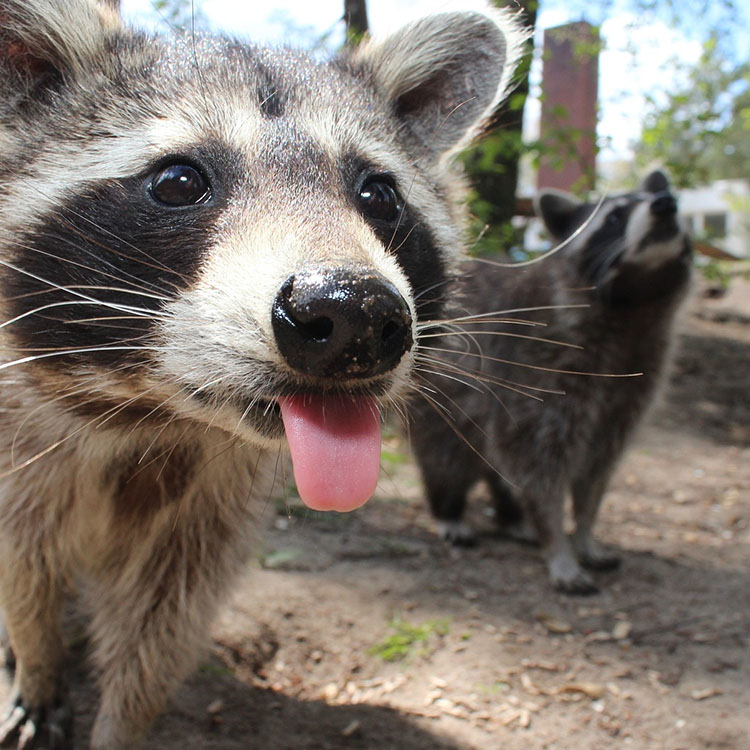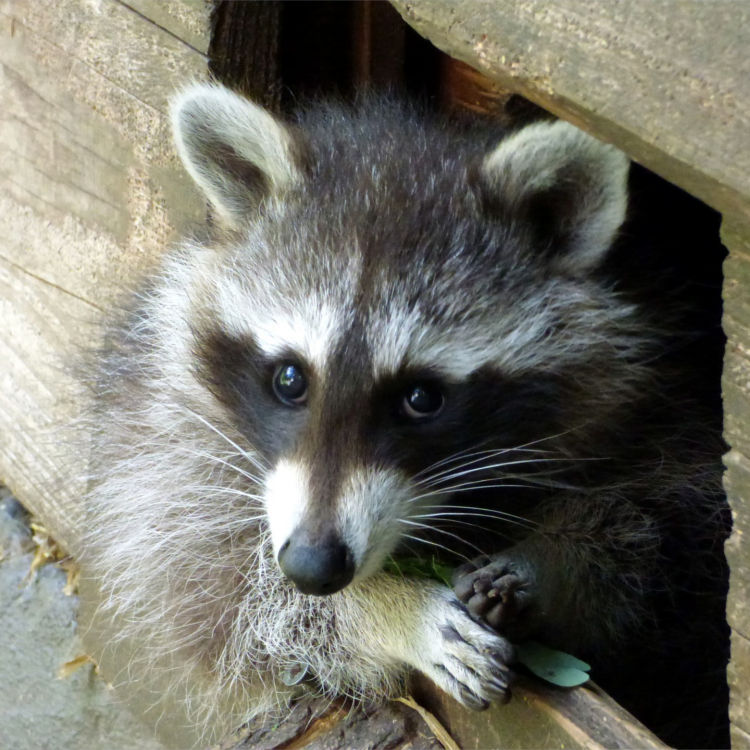Raccoon Removal
Removing Raccoons isn't an easy task, and there's plenty of things to consider when you are starting the job. It's in your best interest to contact local policy enforcement representatives before doing anything on your own. In some states, it's illegal to use certain traps, exterminate them, or move them from one place to another without a license. Wildlife managment professionals in your local area will know what to do to assist you with your raccoon problem.

Getting Started
Before you start placing traps, you'll need to know the habits of your raccoon friends. They like to eat garbage, live near a body of water, and climb. However, that's not enough to know where you need to place the traps, or what to bait with. We recommend a throrough inspection in order to make a solid plan for raccoon removal.
Inspecting Your Property
Look for signs of raccoon habitation on your roof, around your garbage bins, and in your attic and garage spaces. These are all good places to start looking, and will likely lead you elsewhere. Knowing where the raccoons are going will inform you of where to place traps, as well as what is causing the raccoon to want to live in and around your property. You make find out that your garbage bins are too easily accessed, or that you leave a garage window open at night.

Pre-Trapping Exclusion Work
Before you set your traps, do some exclusion work to the affected areas. Seal, repair, and replace any damaged areas, including soffit, fascia board, and roof shingles. Be careful not to seal raccoons inside your home. They will eventually die and begin to decompose, and that odor is much worse than their feces and urine. Doing some exclusion work before trapping is a good idea because it decreases the chance that another raccoon will come along while you have one in the trap.
Setting Traps for Raccoon Removal
When exclusion alone isn't enough to solve your raccoon problem, set up traps designed for raccoons in the appropriate areas around your property. Once baited and set, these traps should trap a raccoon within a matter of days. Be mindful of small children and pets near the traps, and make sure to check them daily. Our technicians check traps daily to make sure that the trapped raccoons don't attract any other animals or pose a potential threat to your children and pets.
Relocating Trapped Raccoons
We discuss this a lot on our Web site, but you really do need to be careful when transporting trapped raccoons. Not only can raccoons be dangerous and harm you, but there are likely local laws and regulations regarding the relocation fo wild animals. In order to relocate and release a raccoon, most wildlife removal services are required to have a license and work in conjuction with Fish and Wildlife to release them on a nature preserve.
